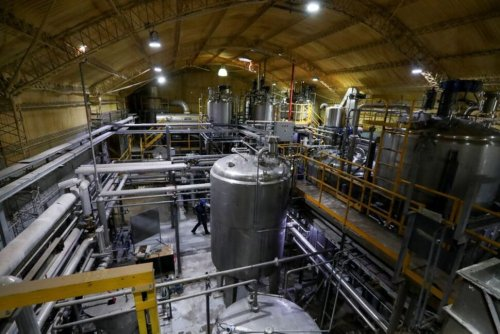News Highlight's:
In the mountainous north of Argentina, a strong stream of lithium projects that are close to starting up could lead to a wave of production that could triple the country’s lithium production in the next two years
The world’s fourth biggest producer of the silvery-white metal is in the so-called “lithium triangle
” It has been attracting investment from Canadian and Chinese mining companies with a regional and market-led model, even as a wave of resource nationalism has spread in the area
In the mountainous north of Argentina, a strong stream of lithium projects that are close to starting up could lead to a wave of production that could triple the country’s lithium production in the next two years.
The world’s fourth biggest producer of the silvery-white metal is in the so-called “lithium triangle.” It has been attracting investment from Canadian and Chinese mining companies with a regional and market-led model, even as a wave of resource nationalism has spread in the area.
Chile, which is next door and the biggest lithium producer in the area, revealed plans for a state-led public-private model last week, which scared investors. Bolivia has kept tight control over its huge, but mostly untapped, resources for a long time, while last year Mexico nationalized its lithium mines.
Even though Argentina’s state-owned energy company YPF (YPFD.BA) started looking for lithium last year, most of the mining industry is still driven by private business and regular approvals of new projects. This is because the government wants to bring in more export dollars through mining, which is one of the few bright spots in an otherwise troubled economy.
“For the last ten years, Argentina has given concessions to projects,” said Franco Mignacco, head of Argentina’s Chamber of Mining Business. “That’s why we have this much investment and development in lithium and the chance for growth right now.”
Mignacco thought that Argentina’s current lithium carbonate production of 40,000 tonnes could triple by 2024 or 2025 to 120,000 tonnes. This would put Argentina ahead of China and closer to Chile, which makes about 180,000 tonnes of lithium carbonate each year.
This would happen because new projects would be added to the two that are already being made. Mignacco said that the country has six lithium projects that are being built and another 15 that are in the early exploration or feasibility stage.
In Chile, on the other hand, the industry is controlled by SQM (SQMA.SN) and Albemarle (ALE.N), and there aren’t many new projects going on. In Bolivia, the government just gave the green light to a new project by a group of Chinese companies.


The only two producing operations in Argentina, the Fénix project of the U.S. company Livent in Catamarca and the Salar de Olaroz mine of the Australian company Allkem Ltd. in Jujuy, are both projected to double their output to 42,500 tonnes in the coming years.
The Cauchari-Olaroz project, which is owned by China’s Ganfeng Lithium Co (002460.SZ) and Canada’s Lithium Americas Corp (LAC.TO), would join these. It is set to start making 40,000 tonnes of lithium carbonate in the second half of 2023.




 CONTACT US
CONTACT US ICC APP
ICC APP
